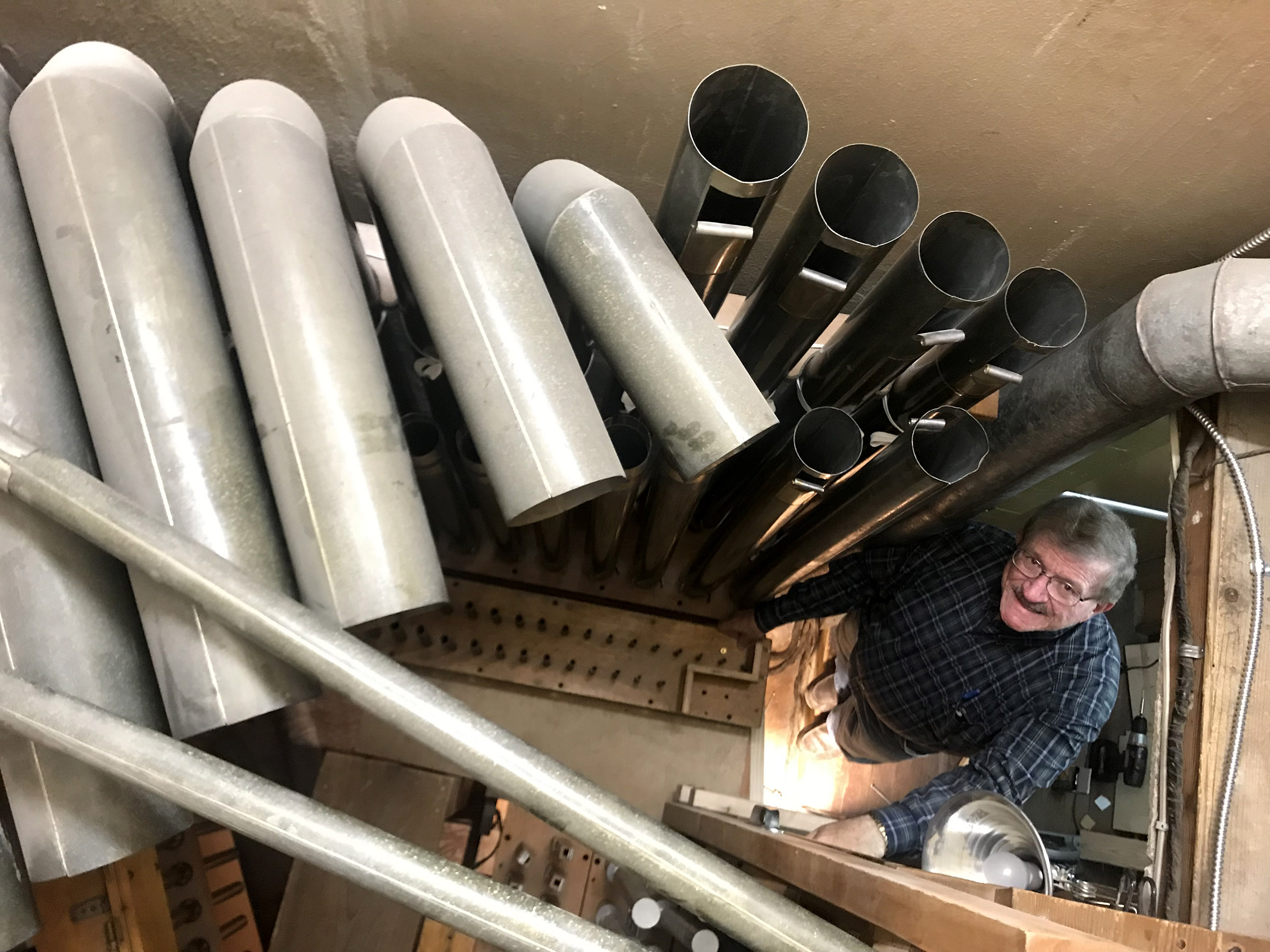 ,
, 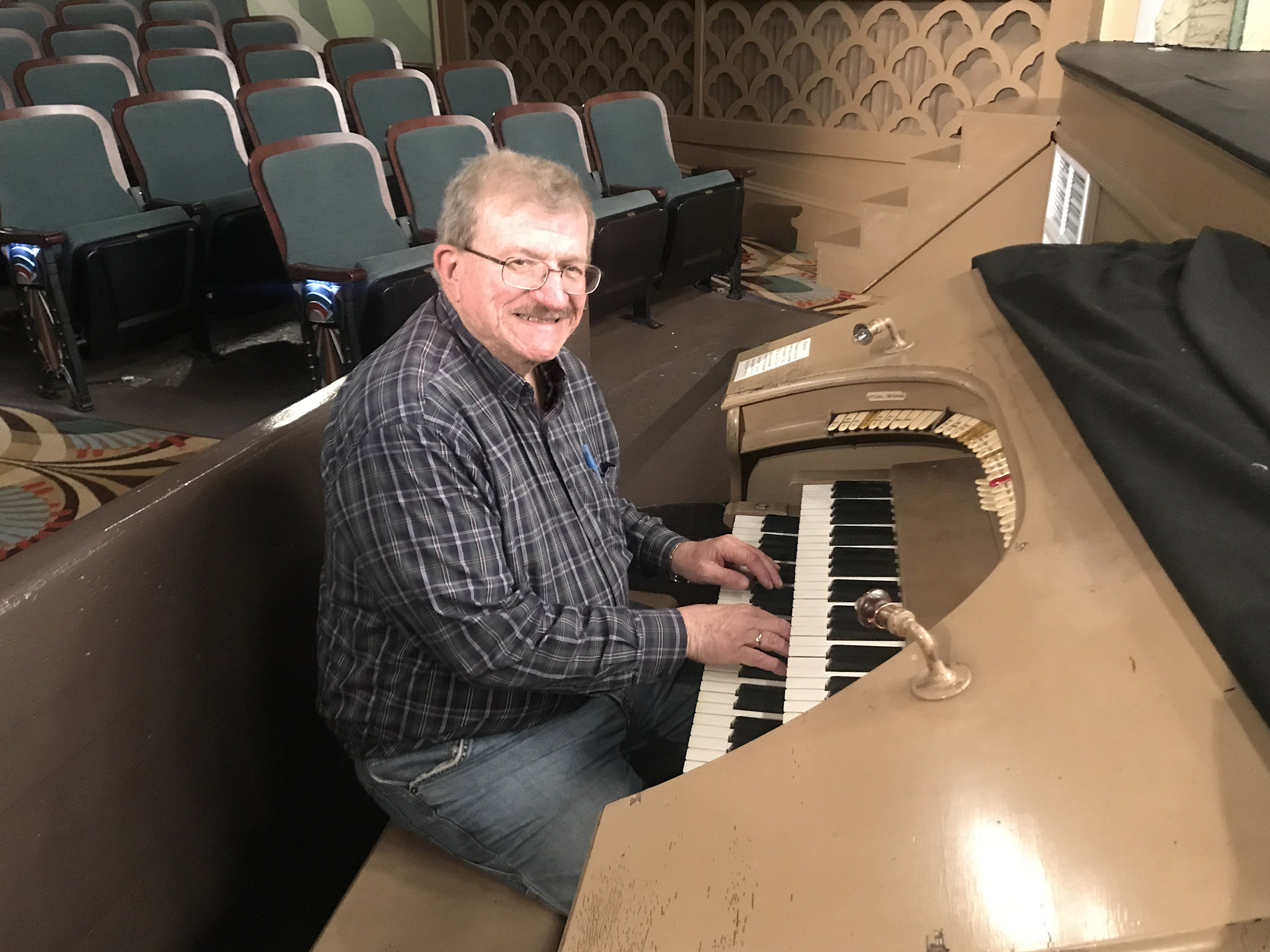 ,
, 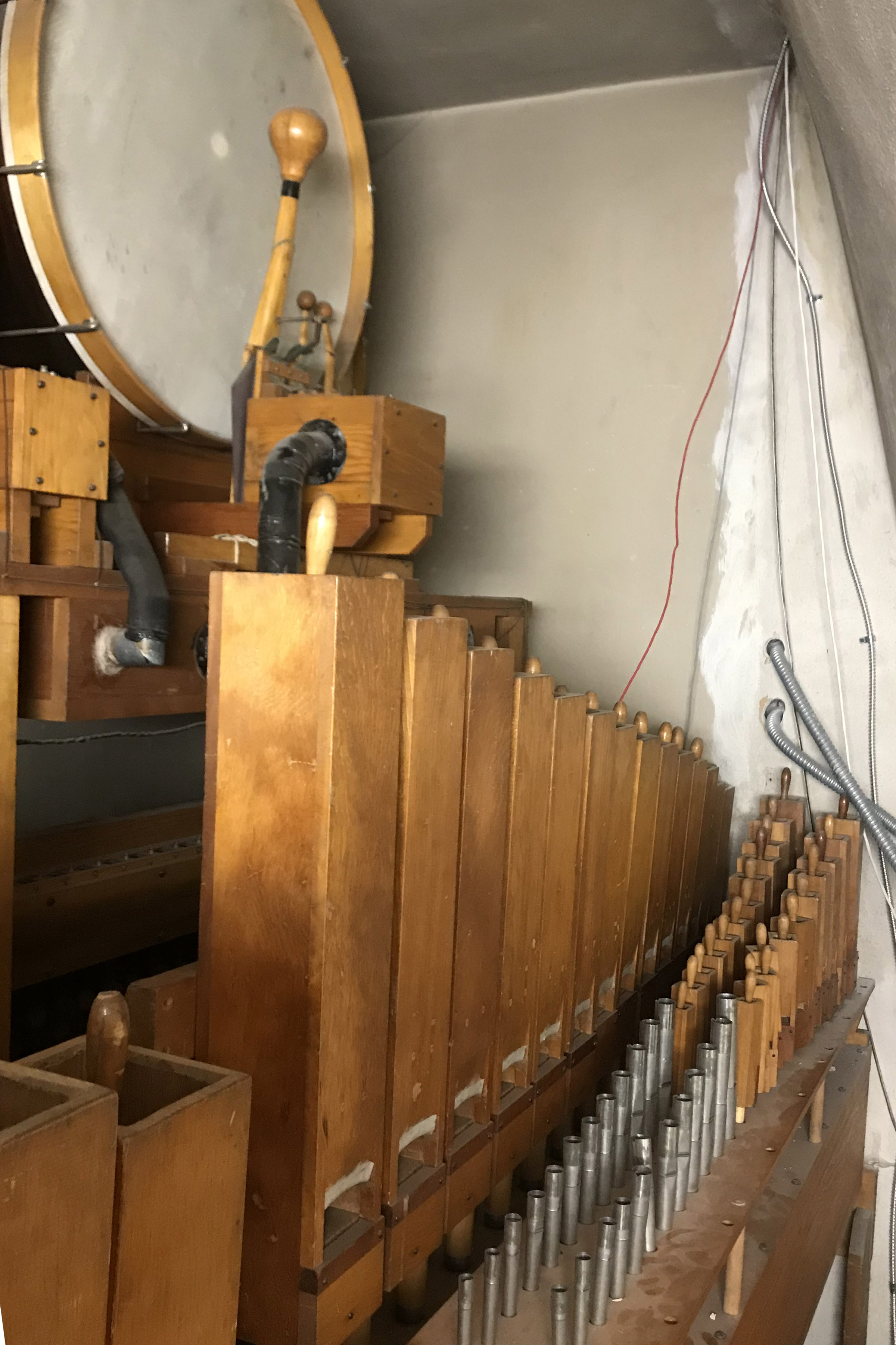 ,
, 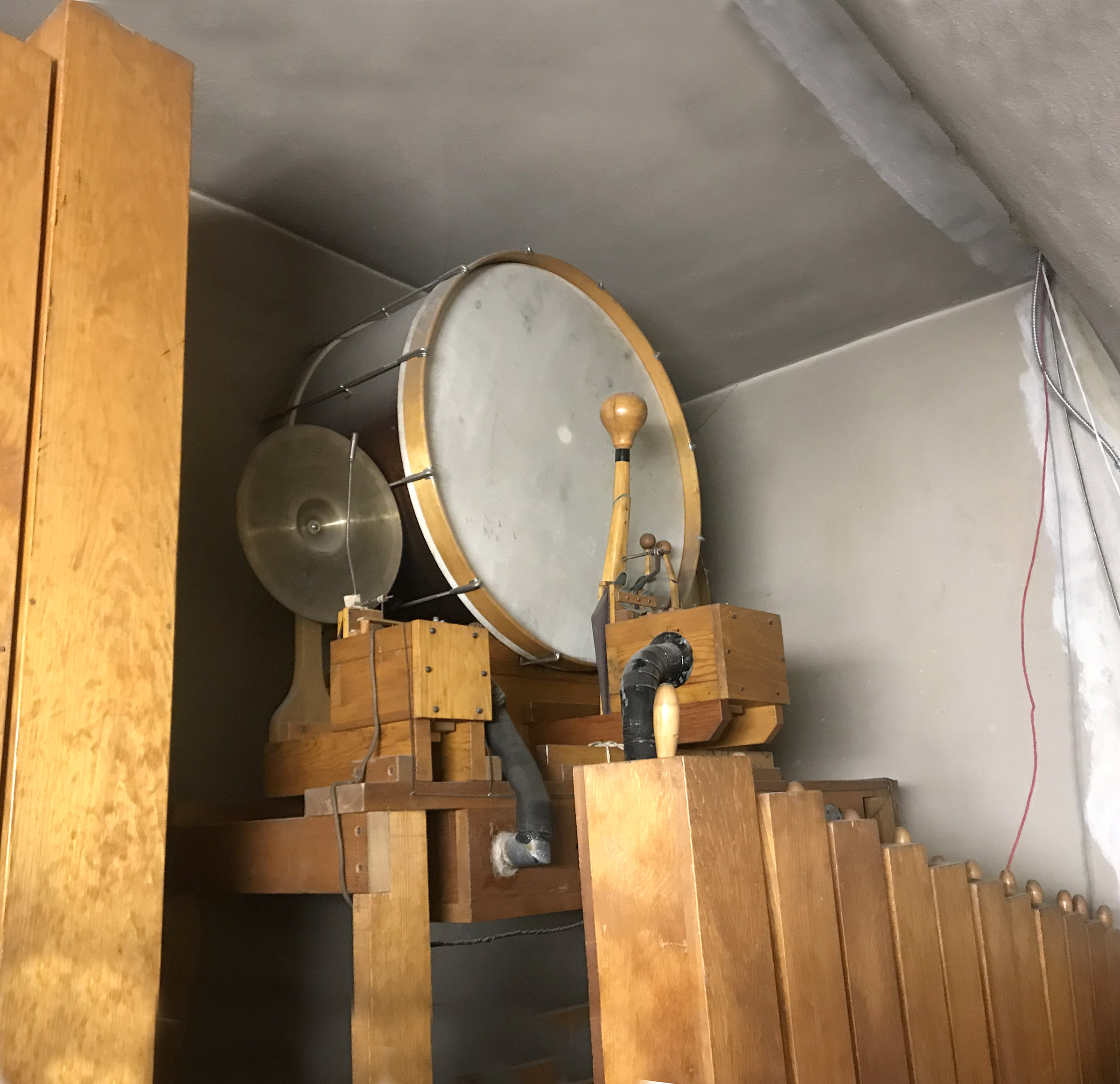 ,
, 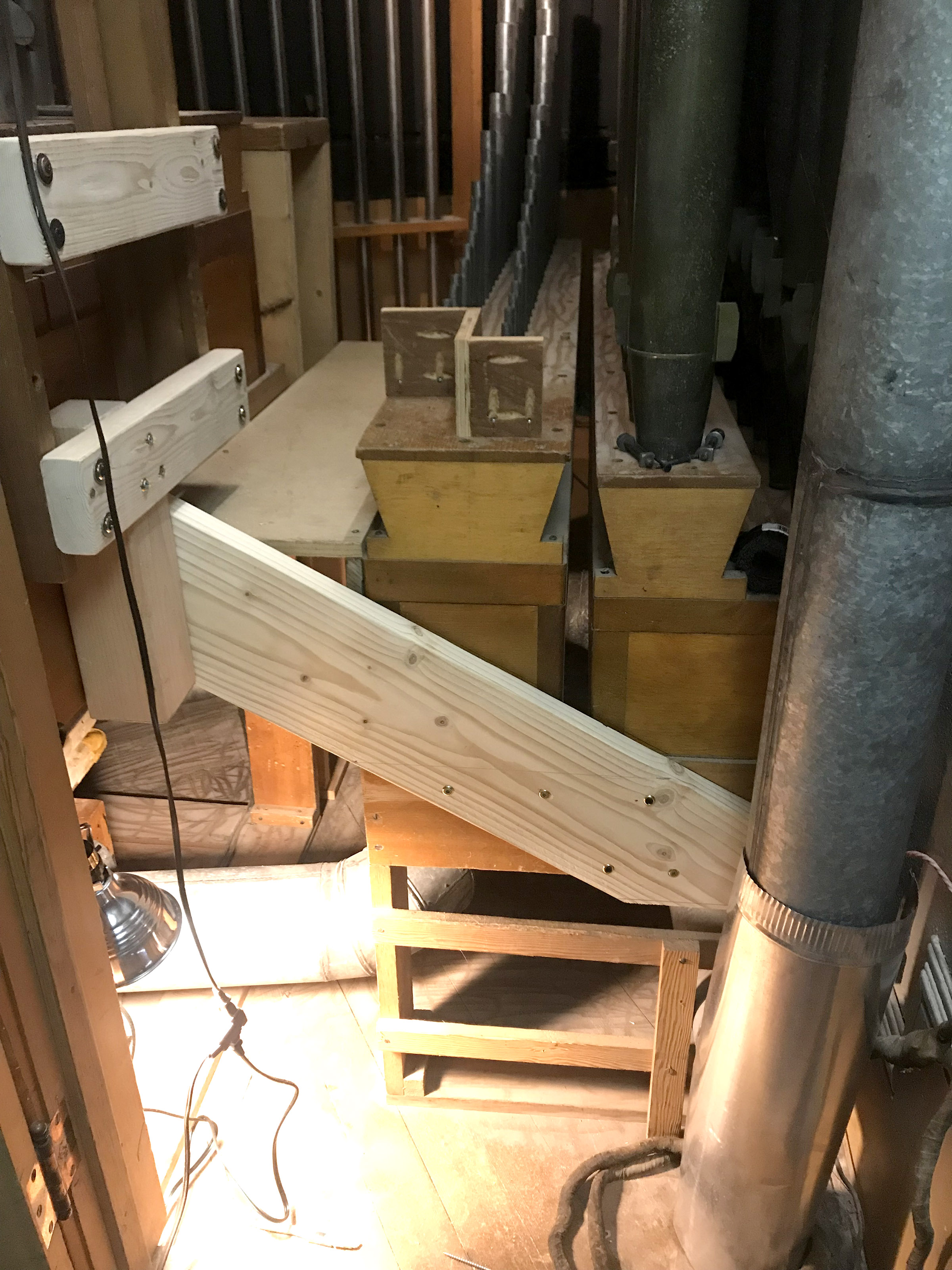 ,
, 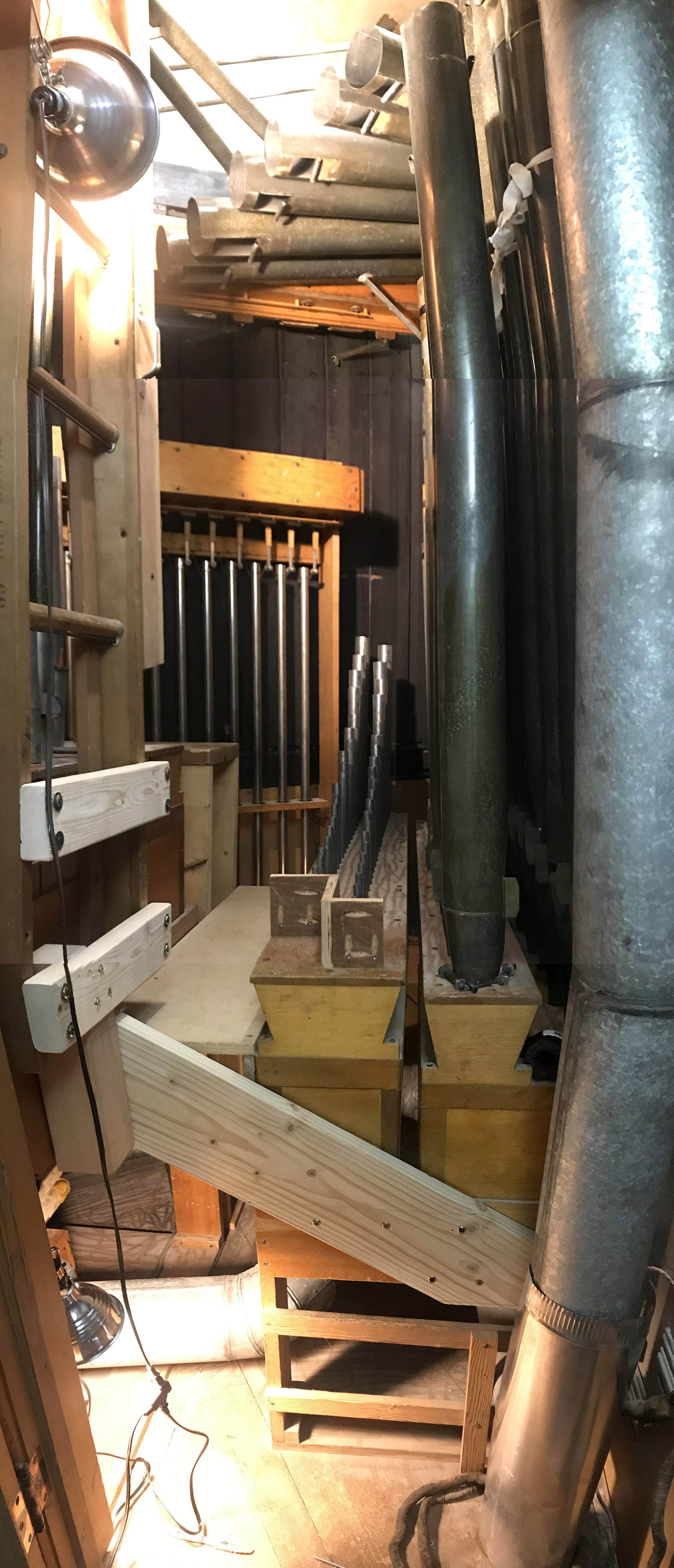
Art Aadland, Valley Springs, South Dakota, travels the country building and repairing organs, and one of his projects this year has been to service and repair the Palace Theatre organ.
The 1926 Smith-Geneva is the oldest working theater organ of its make and model in the United States, and Aadland is determined to improve its sound while protecting its historic integrity.
The instrument’s system of more than 400 pipes on five ranks, two manuals and a full set of percussion puts out a giant sound from a tiny crawlspace backstage in Luverne’s historic theater.
A small door in the southwest corner of the auditorium opens to a secret chamber that houses vertical ranks of pipes ranging in size from smaller than a pencil to roughly 9 feet tall.
The setup includes a full-size base drum, cymbals, chimes, xylophone and other percussion specialties.
Aadland has a senior apprentice to hand him tools, but he said space requires the work to be a one-man job.
“It’s so cramped in there you really only have room for one person,” he said, carefully maneuvering himself between the fragile parts.
Full access
His first order of business was to build a new support system and service access in order to more safely work on the wind chests and delicate organ mechanisms.
“That structural piece really has to be done right, so it doesn’t compromise service access,” Aadland said. “Without it, I’d have to lie on my back on a very delicate conduit, sandwiched between parts.”
The new construction needed to hold up nearly 1,000 pounds of wind chests and pipes, and it now includes a new ladder system and safer scaffolding for future service calls.
Anatomy of an organ
To observe Aadland at work is a lesson in organ anatomy.
He explains that the Palace organ has two ranks of wooden pipes and three ranks of metal pipes. Each pipe represents a note.
The metal pipes are arranged on three ranks with 73 pipes per rank.
Of the wooden set, there are two ranks, one with 85 wooden pipes and the other with 97 — including 12 low bass 9-foot-tall wooden pipes that carry 16 pitches.
Wooden pipes produce sounds like a flute, saxophone or other “woodwind” instruments.
“There are quite a few dead notes,” Aadland said about the Palace organ. “I’m repairing all the ones that aren’t functioning.”
He explains the sprawling wiring system under the Palace stage triggers the valves that open the pipes, which are metal or wood.
“There are numerous electrical repairs that are needed,” Aadland said. “It’s meant cleaning connections, and contacts and resoldering them.”
Some of his work involves straightening bent pipes and repairing broken valve linkages and the channeled air passages that deliver sound from the pipes.
He explained there are ruptures in some of the pneumatic pouches that house valves that carry messages from the keyboard to the mechanism that delivers wind to the pipes.
The material is made of paper-thin leather and sometimes a rubbery fabric, both of which become brittle with age.
Aadland said he re-leathers and re-fabrics them where necessary. “Some of these are over 70 years old,” he said. “I’m trying to keep everything as historically accurate as possible.”
Dividing time
The Blue Mound Area Theatre Board received a $10,000 grant from the Luverne Area Community Foundation to renovate the historic organ.
Their obvious choice for the work was Aadland Pipe Organ Co. in Valley Springs, operated by Art and Ellen Aadland since 1971.
In addition to building and repairing organs, the company is known for engineering climate stability and service access to organs.
Aadland started working on the Palace organ this spring and is about halfway through the necessary work, with the lower manual (keyboard) nearly finished.
“It’s almost 100 percent fully functional, and that hasn’t happened in quite awhile,” he said. “The upper manual still has a few dead notes.”
Aadland is dividing his time between the Palace in Luverne and Our Father’s Lutheran Church near Littleton, Colorado, where he’s building an organ from the ground up.
So, a few days a month, a few days at a time, Aadland chips away at restoring the Palace organ to its optimal sound.
“It’s satisfying to see it come to life to the extent that it hasn’t in many years,” he said.
Pipes to sing Dec. 27 and 29
Palace Theatre patrons will have a chance to hear the improved sound this weekend during two organ recitals ahead of the Friday night and Sunday afternoon movie showing.
Ryan Hardy, president of the Red River Theater Organ Society, will perform short preludes to the movie, “Frozen II,” at 7 p.m. Friday and 2 p.m. Sunday. They will start about 25 minutes prior to show times. (See the related story.)
Fewer than 200 theater organs exist in the world and only a small number of those are in working order.
The Palace Theatre’s 1920 Smith-Geneva organ is a rare gem, according to Ryan Hardy, president of the Red River Theater Organ Society.
“It’s significant in that it’s an all-original instrument still in operation in its original venue,” Hardy said. “That’s extremely rare. It’s probably the only one — or one of the only ones — of its kind.”
Hardy, of Fargo, North Dakota, will perform short organ recitals this weekend at the Palace ahead of the movie, “Frozen II,” at 7 p.m. Friday and 2 p.m. Sunday.
The organ prelude will start about 25 minutes prior to show times.
“I enjoy showcasing and playing the organ for an audience … to share an appreciation for the instrument,” he said. “I get the impression it doesn’t get played often.”
When theaters began using organs in the 1920s, they were essential for silent films and live entertainment of the era.
But over the past century, movies began using their own sound, and theater organs were no longer needed.
Most disappeared when theaters themselves were demolished, and many that survived with their buildings were not maintained and fell into disrepair.
Hardy said he enjoys playing theater organs like the one at the Palace to offer others a glimpse at what the instruments are capable of.
“When a lot of people think about pipe organs, they think church organs and hymns,” Hardy said.
“These organs were meant to be played for entertainment.”
For example they have varying sizes and numbers of manuals and of pipes and most are fully acoustic — built with percussion instruments like drums, chimes and xylophones.
This weekend’s recitals in Luverne will offer opportunities for Palace patrons to hear the local organ after its yearlong repair and renovation. (See the companion story)
Hardy is a fourth-year student at North Dakota State University in Fargo where he’s studying music and music education.
His parents live in Sioux Falls, and he said he enjoys playing the Palace organ when traveling through the area. Mostly, he said he hopes to call attention to musical and theatrical gifts in the community.
“They shouldn’t take their Palace Theatre for granted or the organ, for that matter,” Hardy said.
“To see one operating with success in such a small town is really impressive, and they should always support it.”


